Premier Polytunnels has examined the affect global warming is having on UK gardens, and quizzed British gardeners on their favourite plants to grow at home.
How climate change is affecting plants in the great British Garden
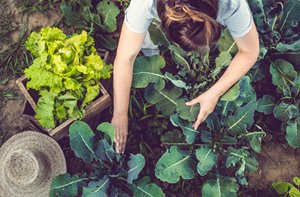 Owing to the year’s events and the restrictions that have come along with them, the UK’s interest in gardening and ‘growing your own’ has spiked in interest over the course of the last year, with people turning to the outdoors as a means of helping their mental health, becoming more self-sufficient, and getting exercise.
Owing to the year’s events and the restrictions that have come along with them, the UK’s interest in gardening and ‘growing your own’ has spiked in interest over the course of the last year, with people turning to the outdoors as a means of helping their mental health, becoming more self-sufficient, and getting exercise.
Whether you’re a life-long gardener, or a relative newbie to the pastime, climate change and the affect it has are already changing the way in which we sow and nurture our plants. In the UK alone, an increasing annual temperature, winter flooding, and summer droughts combined are altering the types of plants that can thrive in UK soil.
 To discover more we asked the nation to tell us about the plants they love to grow at home, and we also asked an expert gardener how global warming may impact the varieties of plants we grow going forward.
To discover more we asked the nation to tell us about the plants they love to grow at home, and we also asked an expert gardener how global warming may impact the varieties of plants we grow going forward.
Green-fingered nation
Firstly, we were keen to learn more about the UK’s gardening habits and so we surveyed 1,000 UK adults to learn more.
The results showed that a large portion of the nation – a third in fact (30%) - claim to be excellent when it comes to gardening. That said, despite their green-fingered attempts, almost ten per cent (7%) of UK adults currently fail to keep their garden plants alive, and a further 63% (nearly two thirds) stated it very much depended on the type of plant as to whether it will survive under their care.
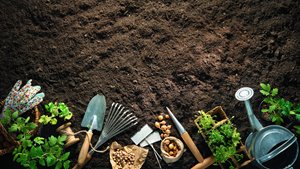 How does your garden grow?
How does your garden grow?
We quizzed avid gardeners as to what they had been planting and nurturing in 2020, and it turns out Brits have been pretty adventurous in their growing efforts of late.
In UK gardens, yards and even in pots on balconies, the most popular plants grown by UK adults in 2020, were long-time favourite tomatoes (49%), roses (42%) and daffodils (39%). Whilst chamomile (4%), zinnias (5%), grapevines (7%), cornflowers (10%) and allium (12%) rounded up the lesser-favoured plant list amongst UK growers.
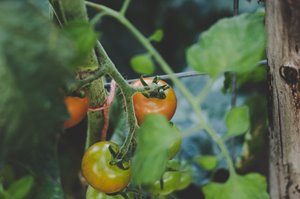 The top 10 plants grown by green-fingered Brits in 2020 were:
The top 10 plants grown by green-fingered Brits in 2020 were:
- Tomato (49%)
- Roses (42%)
- Daffodils (39%)
- Mint (36%)
- Strawberries (33%)
- Potato (32%)
- Fuchsia (31%)
- Tulips (31%)
- Sunflowers (30%)
- Rosemary (25%)
But what is making it more of a challenge for us to keep our plants thriving, and what is aiding us in doing so?
Rising Temperatures
Our research found that the UK’s average annual temperatures have increased by around a significant 3.9% since 2015.
In fact, some months show an average temperature increase of almost fifty per cent (49%) when comparing 2015 and 2020.
Average UK monthly temperatures (°C) 2015-2020

And that’s not all. With temperatures estimated to increase by a further 1.5 degrees in the UK by 2050, our green spaces and the way in which we tend to them will undoubtedly need to change and adapt in the coming years in order to survive.
Rain, rain, or lack thereof…
Another issue stemming from climate change that green-fingered Brits are battling, is that gardens are waterlogged in certain months. In fact, rain is posing a problem in both excess and deficiency, with torrential rainfalls combined with the harsh conditions brought about by the droughts of British summertime both creating a challenging terrain for our plants in equal measure.
The UK’s average annual rainfall across the winter months has increased by a substantial 11.3%, from 429mm in 2000, to 470.4mm in 2020.
When life gives you lemons
Although many of the plants and vegetation are learning to adapt to these changing conditions, there are some quite noticeable changes in gardens across the country.
Citrus fruits, figs, grapevines and even palm trees are becoming a more common feature in British gardens, flourishing in recent years due to the change in weather conditions, and in more unusual cases, bananas trees were found to be growing in both the Northern city of Stockport and in areas of the South of England, albeit not always bearing edible fruits.
Jack Wallington, landscape designer, conservationist and gardening writer for the Telegraph, shared some insight as to the effects this might have on our gardens:
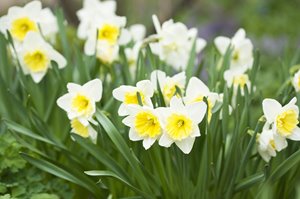 “Global warming and climate change are having a noticeable impact on plants we grow in the UK. In mild areas, daffodils start flowering before Christmas while dahlias and salvia are still going!
“Global warming and climate change are having a noticeable impact on plants we grow in the UK. In mild areas, daffodils start flowering before Christmas while dahlias and salvia are still going!
“Our winters are wetter with more rainfall, combined with warmer temperatures leading to less snow and frost. Soil remains waterlogged rather than freezing over which leads to more plants rotting or drowning, as well as increased flooding particularly in northern parts of the country. At the other end of the stick, summers are hotter with extended periods with no rain making gardening increasingly difficult in south eastern areas.
“In southern areas many tender plants including Echium pininana and Ricinus communis are now able to survive winter in sheltered spots without protection, while common herb fennel can spread more aggressively. Dahlias were traditionally dug up in winter to store indoors but with soil temperatures increasing, in many areas of the UK there’s no point as they survive - and thrive - outside. Many warm climate fruits are performing better including figs and peaches.
“Summer in southern regions of the UK is becoming a big problem for gardeners due to long periods without rain. Traditional garden favourites such as dahlias, hostas and rudbeckia are already struggling without irrigation, which isn’t water efficient. Instead, drought tolerant plants like Santolina, Perovskia and Hylotelephium will grow in popularity.
“The change in climate means our growing season is now much longer, perhaps by up to two months in many areas of the UK compared to a couple of decades ago. This means earlier sowings, additional sowings later in summer and harvest well in autumn, even into months we would have once considered to be winter.”
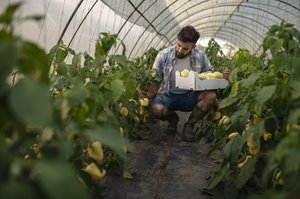 So, what should we be growing and when?
So, what should we be growing and when?
January:
- Much like giving your home a much-needed spring clean to start the year afresh, January is the perfect month to prep and ensure you’re ready for the gardening year ahead.
- If you have a greenhouse or polytunnel, then green vegetables such as pak choi and winter lettuces can be planted.
- Whilst it may not appeal to fair-weather gardeners, getting out and prepping your garden, ensuring weeding and mulching is well underway will set you up nicely for the year.
- Pruning can commence. Pay particular attention to rose bushes.
- While it may not be the best time to start planting for many garden varieties, bare root plants will survive the harsher climates and so these can be dug in.
- Making time for garden projects such as laying new paths, putting up or repairing netting and fences, and ensuring you have bulbs ordered for the coming months can all be done this month too.
- You should be able to spot daffodils and crocuses starting to poke their way through the soil.
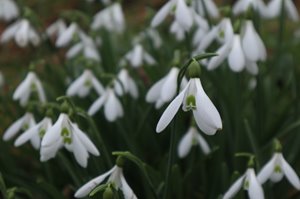 February:
February:
- Garden prep and maintenance such as weeding and mulching can continue into February.
- Carry out routine maintenance on plants such as perennials, ensuring they are cut well back.
- If you live in more southern, warmer parts of the UK, carrots can be grown with the aid of a greenhouse or polytunnel.
- Annuals, such as lilies, and flowers such as sweet peas, pansies, and daisies, as well as perennials can be sown and planted this month, but make sure the weather is fair enough for you to do so, as February can often be one of the coldest months of the year.
- Indoors and in pots, with the aid of a warm spot such as an airing cupboard, you can begin to germinate tomatoes, peppers, and aubergines.
- Crocuses, daffodils, and snowdrops will all add a splash of colour to your garden as they bloom in February.
 March:
March:
- The weather in March can be a bit hit or miss for gardening, with frozen ground being a common site across the UK.
- With this in mind, wait until the weather becomes kinder before you begin your planting in March, usually towards the latter part of the month.
- The planting of root vegetables can begin with carrots and turnips and the like.
- Other veggies you could make a start on, should you wish, include the salads (radishes, lettuces, cress, etc.), as well as the heartier vegetables including leeks, spouts and broccoli varieties.
- Early potato crops can be started in March.
- French beans and herbs can be started if you have use of a polytunnel or similar, whilst indoors, you can begin the initial stages of growing tomatoes before moving them outdoors at a later stage.
April:
- The weather is starting to warm up, so gardening, even for the fairer weathered among us will be a much more enjoyable pastime.
- For much of the UK, you will still be catching up on your to do list from March, thanks to the good old British weather.
- Get that second round of early potatoes planted this month.
- You can also look to plant – initially in pots – beans such as broad and mangetout.
- Look to expand the herbs you’re cultivating too, why not plant some chives, especially if you’re new to the world of gardening, as they are fairly low-maintenance in terms of growth and upkeep.
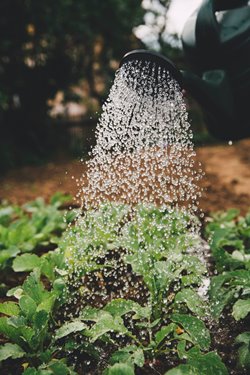 May:
May:
- The temperatures truly start to rise in May, meaning most herbs can be grown outdoors now.
- Unfortunately, weeding will be a necessity this month as the warmer weather will be helping these to grow in abundance.
- Continue utilising your undercover garden areas too, even in the warmer months. Basil will flourish if grown in correct conditions in a greenhouse or polytunnel type structure.
- Ensure you keep up with the planting of salad and root veg now too, as well as more additions to your potato crop, to be harvested later in the year.
- In preparation for the next round of growing, pull out any tulip bulbs ahead of planting your next lot.
June:
- Congratulations, you can finally begin to harvest those early potato crops, perfect for summer salads or served with fish dishes. Depending on when and how many you have planted, harvesting can usually continue well into October.
- It’s also time to move outside any of the summer veggies you’ve started off inside your polytunnel – tomatoes, cucumbers, lesser hardy leafy salads, etc.
- Strawberry plants can be added to your garden in June, but ensure you cover them over with nets to prevent them being eaten.
- You can also begin to dead head any flowers that are past their best, to encourage them to grow again next year.
- Sowing and planting can begin this month for your autumn and winter harvests too - think root veg and beets.
July & August:
- Spring onions can be sown in July. So too can the last of the root vegetable crop for the year.
- Most of what you plant now will be ready to eat in the colder, winter months, so ensure you opt for winter salad varieties going into August.
- Keep tending to those summer berries such as strawberries and raspberries to avoid disappointment due to unwanted critters when it comes to harvesting them later on.
- You should, towards the middle of August, be able to pick some of those delicious summer fruits.
- Ensure you keep up with a regular watering schedule, especially when the weather begins to hot up and rainy days make less of an appearance.
September & October:
- The last of the potato and root vegetable crops can be enjoyed across these autumn months.
- A polytunnel will allow you to extend your growing season somewhat, so make use of these where possible.
- You can enjoy some wonderful bonfires across these colder months, making use of the fallen leaves and dried plants that will undoubtedly find their way into your garden.
- Spring greens can be planted, and will continue to grow throughout the winter months, ready to be enjoyed in the earlier part of the following year.
- Onions too can be planted in September. So too can daffodil bulbs ready for spring awakening, and peonies too.
November & December:
- Due to the weather conditions and bitter temperatures, November and December are best spent getting the garden tidied up ahead of starting the cycle again in the new year.
- Keep on top of dead leaves and rotting vegetation.
- If you have a pond, ensure any ice is broken on a regular basis to enable the wildlife that inhabits it to breathe and restore itself.
- Garlic is the perfect bulb for planting in the latter half of the year, so why not give it a go?
 Conclusion
Conclusion
Whilst there are undeniably substantial changes being brought about by climate change to our beloved gardens which are certainly becoming more and more noticeable, by learning to adapt - as our plants have done – we can provide an environment in which they can flourish and thrive.
The changes, whilst a stark reminder of the effect of global warming, are navigable at present, albeit with some substantial losses in terms of plants, wildlife, and income for those who grow to sell over the years.
Ensure you add in plenty of hardy plants to your garden, and spend time doing some research on what steps can be taking to ensure your garden is ready to survive the majority of the climate obstacles it may encounter.
Similarly, introducing structures to your garden, such as an orangery, greenhouse or polytunnel can also provide shelter and a more stable environment for your plants to blossom.
You can shop our range of polytunnels here
Study details:
Premier Polytunnels surveyed 1,000 UK adults
Research and data correct as of 7/1/2021
Sources of information:
https://www.metoffice.gov.uk/pub/data/weather/uk/climate/datasets/Tmean/date/UK.txt
https://www.metoffice.gov.uk/pub/data/weather/uk/climate/datasets/Rainfall/date/UK.txt